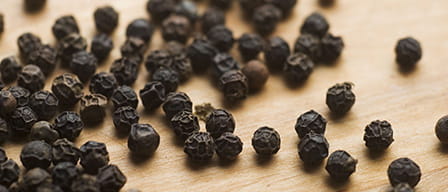
Black Pepper
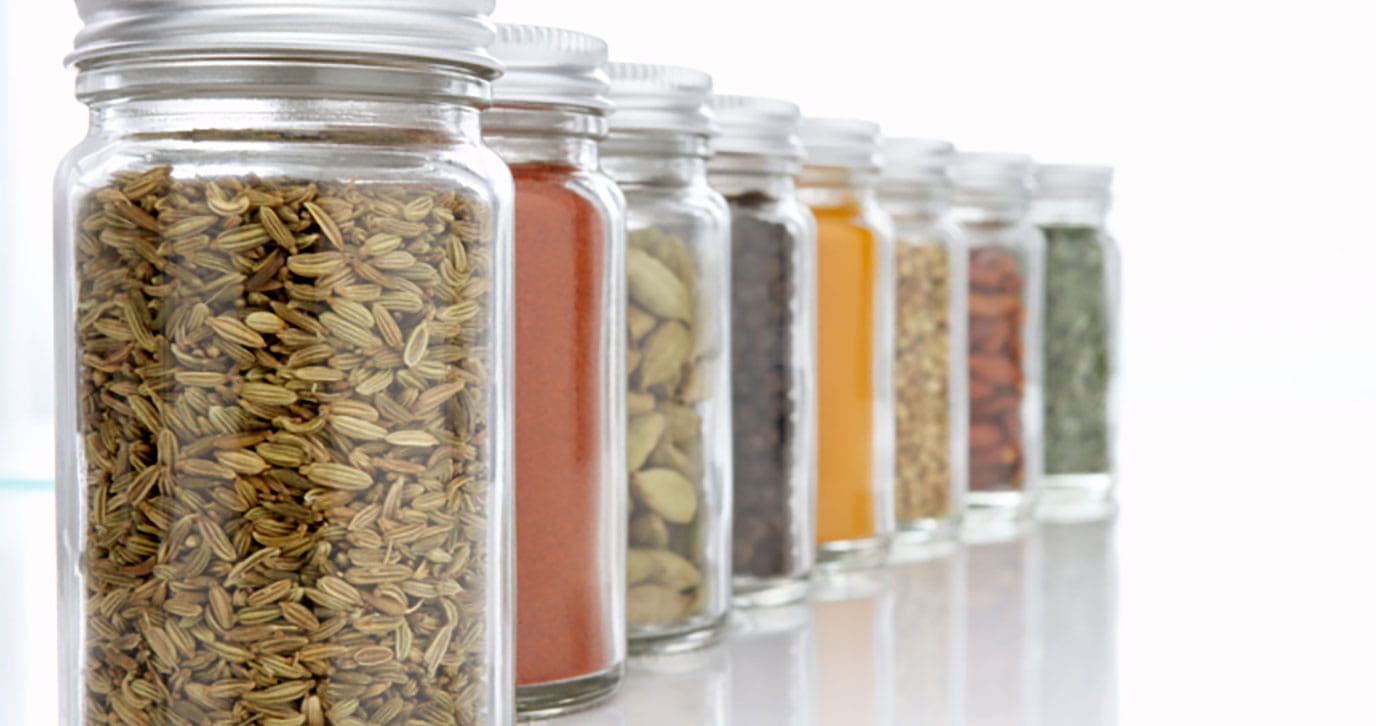

Black seed is from Nigella sativa, a flowering plant native to southwest Asia and the Mediterranean which now grows throughout India, the Middle East, Europe, and Northern Africa. Black seed, also known as black cumin and black caraway, has been used for centuries in herbal medicine to treat various health conditions including headaches, toothaches, infections, and respiratory issues like asthma and bronchitis. Today, it is used to treat digestive issues like diarrhea, constipation, and hemorrhoids, allergies, and respiratory conditions, and to manage blood pressure, cholesterol levels, and immunity. Black seed has a strong aromatic flavor, smoky taste, and crunchy texture. It is often used in savory dishes like curries, soups, and stews, and when baking breads and pastries.
Buchu is derived from the Agathosmaspecies of plants which grow in the Cape region of South Africa. The buchu, or the oils released by their leaves, are traditionally used for a broad spectrum of medicinal purposes. Research is limited on the significance of buchu’s health effects, but it is most notable for its treatment of kidney and urinary tract infections because of its antimicrobial activity. Buchu is used to make herbal teas, tonics, and over-the-counter diuretics. It is also speculated to have anti-inflammatory, antiseptic, antispasmodic, and digestive effects.
Buchu is mainly used by South Africans but is sold commercially in the United States. The buchu leaves can be used to make tea or brewed in brandy; and are commonly used to make oils. The buchu plants produce different scented oils that resemble peppermint and range from sweet to sharper smells. Its strong scent and taste are used to boost fruity flavors, but the most impacted is the flavor of black currant. The oil can also be used as an insect repellant, deodorant, or moisturizer.
Chamomile is an herb that is prepared from the dried flowers of the Matricaria plant. These dried flowers contain terpenoids and flavonoids contributing to its medicinal properties. Chamomile preparations are commonly used for a variety of human ailments such as hay fever, inflammation, muscle spasms, ulcers, gastrointestinal issues, rheumatic pain, and hemorrhoids. It is also used to manage anxiety and insomnia, due to its calming effect. This makes its dried leaves a perfect brewing agent for nighttime teas. Chamomile flowers also produce an iconic blue oil that is used extensively in cosmetics and aromatherapy. Its scent is mild with hints of apples and can be described as sweet and smoky. Essential oils of chamomile are used topically to treat wounds and also can be mixed into perfumes, cosmetic creams, hair products, lotions, toothpaste, and even in liquors.
Due to its wide range of healing properties, chamomile has been used in herbal remedies in Egypt, Greece, and Rome for thousands of years, and it was even believed by the Anglo-Saxons to have been one of nine herbs given to humans by the lord. The chamomile plant is grown mostly in Egypt and southern and eastern European countries, but also in India, Asia, North and South America, Australia, and New Zealand.
Capers are the immature flower buds that are grown on the Capparis spinosa, or the caper bush, which flourishes along the shores of the Mediterranean basin. However, caper bushes can be found in Asia and Australia as well. Capers contain a variety of antioxidants, including phenols, flavonoids, and carotenoids. Medicinally, capers are believed to have anti-inflammatory, antioxidative, and antidiabetic effects, potentially lowering blood glucose and hemoglobin A1C. Additionally, they may be helpful in reducing blood and liver triglycerides as well as LDL-cholesterol.
Capers have a piquant flavor that most people describe as salty. The taste comes from the mustard oil within the caper, which is released from the plant's crushed tissues. After being picked, capers are typically pickled in vinegar and salt. They are commonly used as a condiment in the United States, sprinkled over bagels and lox and other seafood dishes. In Europe and the Mediterranean, capers are utilized as a predominant ingredient in savory dishes such as French Nicoise salad, Italian Chicken Piccata, or Greek salad. When chopped, they deliver a pungent flavor to many sauces such as tartar and remoulade.
Chinese keys, also known as Chinese ginger or fingerroot for its roots' likeness to fingers, is the more common name of the Boesenbergia rotunda plant found in Southeast Asia. The plant is unsurprisingly a member of the ginger family because its flavor is similar to that of ginger root but slightly less sweet and aromatic. Chinese keys can be prepared in many ways - the heart stems, young leaves, and new shoots can be eaten raw as a side dish with rice, or they can be steamed in a banana leaf along with coconut and other complementary spices. In China, fingerroot is a predominant ingredient in instant soups and curries. Chinese ginger contains many phytochemicals, such as flavonoids, and has analgesic, antimicrobial, anti-inflammatory, and antioxident properties. It is used in the treatment of muscle pain, rheumatism, peptic ulcers, gastrointestinal disorders, dental caries, dermatitis, diarrhea, and wounds. It is also used as a diuretic.
File powder, also known as gumbo file, is a spicy herb native to eastern North America which is made from the dried and ground leaves of the sassafras tree. It is considered an essential ingredient when cooking authentic Creole or Cajun cuisine and has an earthy, yet sweet, taste that resembles root beer. File powder is used in various dishes like jambalaya and gumbo and other soups and stews. It provides a unique flavor and also acts as a thickening agent.
The U.S. Food and Drug Administration currently prohibits sassafras bark, oil, and safrole (a compound in sassafras plants) as flavorings or food additives due to carcinogenic effects. Yet, despite serious safety concerns, people use sassafras to treat urinary tract disorders, bronchitis, hypertension, gout, arthritis, sprains, and skin irritations. It is also used as a tonic and traditionally was used as a “blood purifier.”
Galangal refers to the root of several plants of the Zingiberaceae family which are predominantly grown and used in Southeast Asia for medication, cuisine, and cosmetics. The spicy blossoms of these plants are edible and used as preservatives. The plant shares its heritage with turmeric and ginger, tasting similar to both, but less bitter than turmeric and slightly more peppery than ginger. Similar to ginger and turmeric, galangal can be eaten fresh or cooked and is a popular addition to many Chinese, Indonesian, Malaysian, and Thai dishes, especially curries and soups. It can be substituted for ginger in a variety of recipes. Galangal is rich in antioxidants, specifically flavanols and polyphenols, and has anti-inflammatory and antimicrobial components. Thus, it is used to manage various ailments, like arthritis, infections, and gastrointestinal issues like nausea and ulcers. Although research is limited, it also is believed to increase sperm count and male infertility as well as help fight cancer.
Grains of paradise is an aromatic spice made from the seed of the reed-like Aframomum melegueta plant, which is native to West Africa. Grains of paradise have a subtle heat to them, but that taste can more specifically be described as woody, peppery, and citrus - and similar to that of ginger (which is in the same family). The seed is usually sold intact, and used as an aromatic during the cooking process (and removed before serving) or cracked to flavor fats like butter and oil used to cook vegetables, meats, and grains or ground up to season foods. Similar to ground pepper - but with a more distinct flavor, it can be added to spice rubs, braises, spice cakes, and breads.
Grains of paradise seeds are often used for their medicinal purposes in treating certain ailments and for relieving indigestion, snakebites, and infections. It has anti-inflammatory, antimicrobial, and antioxidant properties and is believed to be a stimulant which might aid weight loss.
The Humulus lupulus plant is a perennial vine whose seed cones or female fruits make hops which are used to preserve and flavor beer. This vine is native to Europe, southwestern Asia, and North America. Hops grown commercially in the U.S. are the European variety which has now escaped cultivation and naturalized in many areas. Today, the United States is the world’s largest producer of hops.
Hops are rich in phenols and flavonoids and have been used medicinally for over 1000 years. There is limited scientific evidence on the health impact of hops, but they are believed to have anti-inflammatory and analgesic effects and are used to alleviate anxiety, insomnia, nervousness, restlessness, and irritability. Thus, hops are also used in non-alcoholic nighttime beverages such as tea and in skincare products like lotions and soaps. Other uses include ingesting hops to manage bladder infections, intestinal cramps, attention deficit-hyperactivity disorder (ADHD), and various cancers.
Horseradish is an herb derived from the root of the armoracia rusticana plant, which is part of the cabbage family. The plant is indigenous to southeastern Europe and western Asia, but after being brought to North America by colonists, is now grown in the United States. The strong and spicy flavor of horseradish comes from mustard oil, which is released from the cells of the plant when they are crushed during harvesting. Horseradish needs to be used or mixed with vinegar promptly because the oil will degrade and become bitter. It is commonly used to make sauces (e.g., creamy horseradish or cocktail sauce) or to flavor fish or meat. Horseradish is low in calories and contains some micronutrients including calcium, potassium, magnesium, and folate.
Medicinally, horseradish is most often used to relieve colds and treat respiratory problems, like sinusitis and bronchitis, because of its ability to open up the sinuses. Horseradish has antimicrobial, anti-inflammatory, and antioxidant properties, and potentially anticarcinogenic effects.
The hyssop plant belongs to the mint family and is native to the Middle East and Southeastern Europe. It is similar to rosemary or lavender. While in the Middle Ages it was popular as a flavoring for soups and stuffings, its main use nowadays is in the distillation of liqueurs like Chartreuse. Due to its decline in popularity, it is less commonly used in cooking. Yet, its young leaves and flowers are edible and have a sweet flavor similar to licorice. They may be incorporated into meat and fish dishes, used to season soups and stews, or infused into cocktails.
Hyssop has antioxidant, antimicrobial, antiviral, and anti-aging effects and is used to treat digestive and respiratory issues, like abdominal pain, bloating, loss of appetite, asthma, and the common cold. Hyssop is mostly used as an oil, which is released when the flowers are chopped and crushed. The oil smells floral and minty and can be rubbed directly onto the skin, made into soap, or dropped into a diffuser to be inhaled.
Juniper is an herb that is derived from the evergreen tree, Juniperus communis, which is one of the most widely distributed trees in the world due to its ability to thrive in many climates and moisture levels. It can grow to be a 10-meter-tall tree or as small as a 6-inch shrub. Juniper plants do not require much sunlight and can be found in dry pinewoods, deserts, grasslands, and river valleys. They grow most abundantly in the colder temperature regions of North America, Canada, and Greenland, but also in Europe and Asia.
Juniper berries are not traditional berries in that they are more like a seed cone that is scaly, but still fleshy. It is the part of the tree that is dried and ground to release flavor and aroma into meat, soups, sauces, and stews, or used to stuff or pickle foods. The berries can also be used in tonics and to flavor beer and gin. The oils from the dried juniper berry are mildly fruity and offer a mood-boosting effect, which is why it is used in perfumes and soaps. Medicinally, the berries have been used since ancient Rome, Greece, and Egypt. Juniper has antifungal, antibacterial, anti-inflammatory, antioxidant, and antidiuretic properties. It is used for gastrointestinal (GI) problems including nausea, flatulence, indigestion, bloating, and loss of appetite, as well as GI infections and intestinal worms. Juniper is also used for urinary tract infections, kidney and bladder stones, rheumatoid arthritis, skin conditions, and some cancers.
Lavender is one of the most widely known and versatile herbs. The leaves, flowers, and oils of the plant are used for a variety of medicinal and culinary purposes. Medicinally, lavender is used to treat anxiety, stress, and insomnia by inducing sedation and relaxation. It is also utilized to manage pain, depression, and dementia. The oil of lavender flowers was originally used as an ingredient in ancient Rome, Greece, and Egypt in perfumes, incense, and herbal baths. Its ability to repel insects and deodorize caused people to throw lavender petals over floors in the sickrooms in medieval times. Today, people still use lavender for its light, floral scent in inhalants, creams, lotions, and bath oils. Lavender also is used in cooking and baking and in herbal teas and cocktails. Lavender leaves lend themselves to savory dishes and sauces; while lavender blooms add floral and citrus notes to desserts and pastries. Although the U.S. is currently the world’s largest consumer of lavender oil, the plant itself is native to Europe but can grow most places in the springtime after the last frost of the season.
Lemongrass is a bulbous herb that is native to Asia and Australia but is predominantly grown in India today. It's particularly popular in western Europe, the United States, and southeast Asia for medicinal, culinary, and cosmetic purposes. Lemongrass contains flavonoids and phenolic compounds which contribute to its antioxidant anti-inflammatory effects. It also has analgesic, antibacterial, and antifungal properties. Lemongrass was originally used medicinally for its prevention of infection, and to inhibit oral bacteria growth (by chewing on it). Now, it is more commonly used to treat gastrointestinal issues like nausea, cramping, and vomiting as well as arthritis, headaches, and the common cold. The flavor of lemongrass is similar to but tarter than lemon balm, with hints of both lemon and mint. It is often used to flavor curries, soups, sauces, and herbal teas as the flavors from its oil infuse easily into liquids when cooked. The bulb, the only edible part of the plant, is very tender and is usually enjoyed sliced over a salad or added to stir fries.
Native to southern Europe, north Africa, and west Asia the lemon balm plant is a perennial herb akin to the mint family, and fittingly tastes like a sweet duo of citrus and mint. The leaves of the plant are used medicinally, while the extract and oil of lemon balm are using for flavoring. Lemon balm contains some compounds that seem to have a sedative effect and therefore, is used for anxiety, stress, and insomnia. It also has antiviral properties and is used to treat cold sores. Additional conditions remedied with lemon balm include indigestion, nausea, headaches, depression, and dementia, among others, but strong scientific evidence is lacking to support many of these. Given its sweet, citrusy flavor, fresh lemon balm and lemon balm extract are commonly used in desserts and brewed with teas. It can also be added to soups and salads, or for flavoring poultry, lamb, or fish. Its subtle seasoning is a perfect for sauces and marinades as well.
Lemon verbena is perennial herb and flowering plant native to Argentina and Chile. Today, it grows in northern Africa, southern Europe, the Middle East, and in the United States. The leaves and flowers are used to make medicine to treat anxiety, insomnia, asthma, and digestive issues like indigestion, diarrhea, and constipation. The leaves of lemon verbena release an aromatic oil, which has a citrus flavor described as one of the most intense lemon-flavored herbs. This oil is used to make sauces and salad dressings, in baking, and is infused into beverages, jellies, puddings, sorbets, and ice cream. It can also be applied topically to the skin to relieve muscle pain as well as to disinfect wounds and improve healing.
The root of the licorice plant, Glycyrrhiza glabra, is the source of one of the oldest medicinal herbs which can be traced back to Eurasia. Today licorice grows throughout West Asia, North Africa, and Southern Europe. It has antioxidant, anti-inflammatory, and antimicrobial properties. When consumed, licorice can relieve indigestion, soothe an upset stomach, and ease upper respiratory problems like asthma, a cough, and the common cold. Licorice root is sweet tasting, like anise, with a slightly bitter and salty aftertaste. Licorice sticks can be dissolved in hot water to create teas or flavor fruit juices, syrups, liqueurs, and beers. Licorice is also a common ingredient in confectionaries. As a topical, licorice root extract may be beneficial for acne and eczema.
Lovage is an herb from the plant Levisticum officinale, which is native to western Asia, parts of the Middle East, and the Mediterranean region. It has been cultivated around the globe for centuries and has naturalized in some areas of North America and most of Europe. The lovage plant is particularly fruitful because its growers are able to use many parts of it: the seeds, stalks, and leaves.
The use of lovage medicinally traces back to ancient Rome, and it was later introduced to Britain, where it is still very popular. It is probably best known as a digestive aid for relieving flatulence, indigestion, and gastrointestinal discomfort. Due to its high content of quercetin, a plant pigment has antioxidant and anti-inflammatory properties, lovage is used to relieve aches, joint pain, and headaches. It also is used as a diuretic and a stimulant. Lovage is often made into infusions, tinctures, and essential oils, as well as lozenges and vinegars. It is also used cosmetically, in a salve made from the leaves which is applied to the skin to soothe rashes and psoriasis, or to clear up acne.
Loveroot comes from the flowering perennial plant Ligusticum porteri, that is part of the carrot and parsley family. There are many common names for loveroot, including Porter’s lovage, osha, and wild parsley. Its ideal growing conditions are found in the mountainous areas of Mexico and the United States and can be found in abundance in the Rocky Mountains. There is limited scientific evidence to support the medicinal benefits of loveroot, but it has long been used in Native American, Latin American, and South American cultures as an immune booster and also to treat upper respiratory problems, sore throats, fever, gastrointestinal upset, and viral infections. It contains plant compounds that act as antioxidants, antimicrobials, and antifungals so it can aid in disinfecting wounds as well. Loveroot is most commonly consumed as a tea but can also be found in the form of a capsule. It also is used as an ingredient in tinctures and oils used to manage skin conditions. Due to its recent popularity, it has unfortunately been subject to over-harvesting.
Myrtle is an herb that is most well-known for its internal medicinal properties and is used in the treatment of upper respiratory problems and infections, such as bronchitis, whooping cough, and tuberculosis. It is also used to treat bladder problems, diarrhea, and yeast infections. Myrtle is used topically to mitigate warts, sores, or thrush. Myrtle is rarely used in cooking except on the Italian island of Sardinia, where it flavors marinades and soups similar to bay leaves. It has a spicy, citrus, and slightly bitter taste; and similar to bay leaves, is removed from dishes before being served. In the Mediterranean, where the plant originated from, the berries of the shrub were originally infused into wine. Myrtle is also native to the Middle East; however, today it also grows in southern England and North America.
Nasturtium is one species of over 80 plants belonging to the genus Tropaeolum majus, which is native to Central and South America and used for medicine, cuisine, and decoration. It is believed to have numerous healing properties and might help fight bacteria, fungi, and viruses. Medicinally, it is mainly used preventatively, as it contains vitamin C and phytochemicals, to decrease occurrence of respiratory and urinary tract infections. When applied directly to the skin, it can relieve mild muscle pain as well.
Both the leaves and bright yellow, orange, and red flowers of nasturtium are typically eaten fresh. They have a peppery and pungent flavor which compliments savory foods. Nasturtium flowers are funnel-shaped and have a long spur that contains sweet nectar. They, along with larger leaves, can be stuffed with various dips and salads or mixed into butter, vinaigrettes, and sauces.
Peppermint is native to Europe and Asia, but it has become naturalized in moist environments throughout North America, Australia, and New Zealand. It is a cross between the spearmint and watermint plants and contains a level of menthol that is in between the two, which is why its minty flavor is stronger than spearmint, but lighter than watermint. Fresh or dried peppermint leaves are often used to make herbal teas, tisanes, and infusions. Peppermint is a common flavoring agent for sweets like ice cream, candy, and fruit preserves, alcoholic beverages, chewing gum, toothpaste, and various skincare products. It is often the mint of choice when making desserts because it pairs well with chocolate and citrus (while spearmint is more common in savory recipes). Unsurprisingly, peppermint popularity and sales increase immensely during the holidays and contribute to the United States’ placement as one of the world’s largest producers of peppermint.
Peppermint has been used medicinally for even longer than it has been used for culinary purposes. It originally was incorporated into other medicines to mask off-putting tastes but also is used as a medicine itself. It is used to treat respiratory issues, like the common cold and seasonal allergies, and gastrointestinal problems, including nausea, diarrhea, and flatulence. Peppermint’s cooling effect allows it to act as a muscle relaxer, and it is used to alleviate menstrual cramps, ease stomach pain, and provide relief to sprains and sore muscles.
The common rue herb comes from the plant Ruta graveolens and is a small perennial shrub with yellow flowers and bluish-green leaves. It is indigenous to Eurasia and the Canary Islands but is now most commonly used in Ethiopian cooking. Rue is an aromatic herb used in small quantities, often as single leaves. Fresh rue leaves are sprinkled over salads, mixed into soft, spreadable cheeses, or are cooked into sauces or in meat or egg dishes. Its most popular use is for flavoring coffee in Ethiopia; sprigs of rue are steeped in coffee and give it a hint of citrus flavor.
Rue is believed to have antimicrobial properties and similar to peppermint, it relaxes muscles and eases pain. Therefore, it is used to treat headaches, muscle spasms, menstrual cramps, and arthritis. Rue also stimulates appetite, relieves stomach upset, and mitigates heart palpitations and symptoms of arteriosclerosis. It also is used to treat nervous system problems including epilepsy, multiple sclerosis, and Bell's palsy. It is applied directly to the skin to treat arthritis, sprains, toothaches, and warts; and used as an insect repellent.
Sagebrush, or Artemisia tridentata, is a woody and herbaceous shrub native to the western region of North America. It grows in arid and semi-arid conditions, such as cold desert, steppe, and mountain habits, especially in the western United States. Medicinally, Native American tribes use the sagebrush leaves to make tea which serves as a pain reliever, mostly for toothaches, stomach ailments, rheumatic joints, and postpartum pain. It is also believed to be antimicrobial and used to treat coughs and cold and for disinfecting wounds and skin irritations. Despite its name, sagebrush comes from a different plant than the spice sage. The scent is similar to that of sage, but the flavor of sagebrush is very different, as it is quite bitter. Sagebrush is rarely used in cooking, due to its potential adverse side effects; yet, some people choose to use small amounts in teas and drinks for its aromatic and medicinal properties. Sagebrush is appreciated for the aroma of its leaves, as they have a fresh and clean scent that reminds many people of the holiday season.
Savory is an herb that can be derived from two different types of plants for culinary purposes: summer savory (an annual herb that is planted in the spring) and winter savory (a perennial evergreen that flowers in the winter). Both belong to the mint family and are native to the Mediterranean region but have naturalized to many other places throughout the world. Ancient Romans and Greeks consumed savory as far back as 2000 years ago, cultivating and using it in their cuisine.
The leaves and stems of the savory plants are used to make medicine; and the leaves are used for culinary purposes. Summer savory has a lighter, sweeter, peppery taste and aroma; while winter savory has a stronger, more bitter, and earthy flavor. Although winter and summer savory can often be used interchangeably in cuisine, summer savory is typically used when cooking meats and vegetables, and winter savory is more often used as a flavoring for liquor. Savory is commonly used to manage gastrointestinal issues, specifically indigestion, diarrhea, nausea, and flatulence. In addition, many believe savory helps boost immunity, and therefore, it is used as a natural treatment for colds, coughs, and sore throats.
The sumac plant is a small flowering tree native to Iran that grows wild in Western Asia and most of the Mediterranean region. There are many species of sumac, but Rhus coriaria is the species that produces the spice. Many consider it an essential ingredient in Arabic cuisine, being preferred to lemon for sourness and astringency. Sumac is most commonly sold ground up as a red powder, but sometimes in its whole berry form. Because of its strong pigment, it adds color – and flavor - to dry rubs, spice blends (namely, za’atar), and dressings. Its flavor profile is tart yet fruity, and pairs well with vegetables, grilled lamb, poultry, and fish and is sprinkled over food before serving. Sumac is primarily used for cooking but has can be used as an herbal supplement or in teas. It contains antioxidants and is thought to relieve inflammation.
Tamarind refers to the fruit of an evergreen tree of the pea family, known as Tamarindus indica, which is native to Africa but is now most commonly grown and harvested in India. The fruit of the tree has been likened to bean-like pods that contain seeds and pulp. Although the seeds and leaves of tamarind are edible, the pulp of the fruit is sought after for most culinary endeavors. When the pulp becomes ripe, it resembles a paste and tastes sweet and tart. Its versatility allows for it to be a strong flavor base for savory dishes such as chutneys, sauces, marinades, stews, and curries, but also sweet and spicy desserts and beverages. The acidity of tamarind allows it to act as a meat tenderizer as well. Tamarind pulp contains polyphenols, which elicit antioxidant and anti-inflammatory effects. Thus, it currently is being researched for protection against cancer, heart disease, and diabetes. Traditionally, tamarind is used medicinally in a beverage form to treat diarrhea, constipation, fever, and peptic ulcers. The bark and leaves are also used to promote wound healing.
Wasabi comes from a perennial plant native to Japan that also grows in New Zealand, North America, and throughout Southeast Asia. Given the fact that it is nicknamed “Japanese horseradish” it is unsurprising that this plant belongs to the same family as horseradish, cabbage, and mustard. The plant is grown for its root, which can be used fresh, ground to make a spice, or grated to make a paste. The wasabi root is pungent and has a spicy flavor. It is commonly served with raw fish dishes, such as sushi or sashimi, to season meats, dim sum, and noodle dishes, for making sauces, dips, and marinades, and as a condiment. The entire wasabi plant is edible; the steams are very mild but the leaves and flowers have more of a peppery heat. Wasabi contains antibacterial and anti-inflammatory compounds, and is used as an anticarcinogenic compound. Although more research is needed, wasabi is believed to play a role in promoting bone and brain health.
The zedoary plant, also known as “white turmeric,” is native to India, but now grows throughout Southeast Asia. It is used in a variety of ways in Asian cuisines but over the years has been replaced with ginger in many recipes and its popularity is declining. In Thailand, the root of the plant is enjoyed on its own as a vegetable, while in China and Indonesia, it is ground up and used as a spice in seafood dishes or in curries. Zedoary has a starchy root, so it can also be used to make a thickening agent as well. Steaming the root can helps extract the root’s oils, which are used to flavor liqueurs. Common medicinal uses of zedoary are for indigestion, loss of appetite, and stomach aches. Additionally, it has traditionally been used as a mosquito repellent. Some people manage anxiety, stress, fatigue, and pain and swelling (inflammation) with zedoary.

Black Pepper

Black Pepper
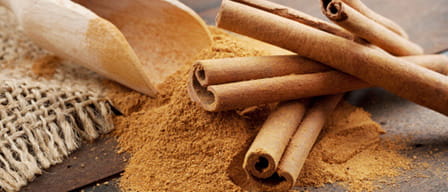
Cinnamon
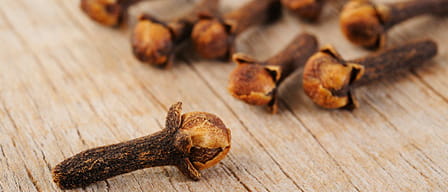
Cloves

Cloves
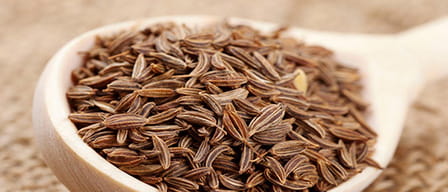
Cumin
